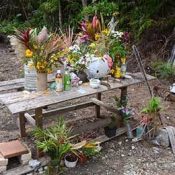
March 21, 2018 Ryukyu Shimpo
Tokyo – Regarding the 2016 murder of a woman attached to a U.S. military base, which faces an issue where the U.S. government is refusing to pay damages to the victim’s survivors, Kazuhiro Suzuki, Director-General of the North American Affairs Bureau at the Foreign Ministry, spoke at the Lower House’s Homeland Security Committee, where he commented that in Article 18, Section6 of the Japan-U.S. Status of Forces Agreement (SOFA), an “employee” was defined as not only someone hired by the U.S. government directly to work as a civilian for the military, but, “Is understood to include employees that were indirectly hired.”
Regarding the damages, Minister of Defense Itsunori Onodera explained, “The respective interpretations of SOFA by the Foreign and Defense Ministries are in alignment.”
In the SOFA agreement, compensation for incidents or accidents that happen outside of official business can be demanded as damages from the U.S. government by the victim in cases where the parties cannot come to a resolution, as stipulated in Article 18, Section 6.
The U.S. maintains that this covers, “Members of the U.S. military as well as employees.” They argue that since the defendant in this incident was an employee of a private company but contracted by the military, and thus not a direct hire, that the U.S. cannot be held responsible.
This issue was raised at the Lower House’s Homeland Security Committee by Seiken Akamine (Communist Party), Mikio Shimoji (Nippon Ishin no Kai), by Kantoku Teruya (Social Democratic Party).
Both the Director-General and Minister of Defense expressed their belief that that the “employee” indicated in Article 18 Section 6 included indirect employees in addition to those hired directly by the U.S. government.
Fueling this issue is a deficiency in SOFA wherein the definitions of “civilian personnel” and “employee” are still unclear.
Onodera told the committee that the status of the defendant in this case, “has been acknowledged as civilian personnel under SOFA.”
Last year, the Japanese and U.S. governments signed a supplementary agreement to SOFA that reduces the scope of civilian personnel, however it is not being seen as a path to a full remedy.
(English translation by T&CT and Sam Grieb)
Go to Japanese
March 18, 2018 Ryukyu Shimpo
Representatives from Japan and Taiwan met at a joint committee on fisheries March 15-16 in Taipei to discuss regulations for 2018 including fishing rights in the area near the Senkaku Islands as part of the Japan-Taiwan Fisheries Agreement. The two sides agreed to amend regulations in the inverted triangle zone north of the Yaeyama Islands, a prime fishing spot for tuna, and to increase the distance between fishing vessels to four miles. The new regulations will go into effect for a trial period starting in April and running through July.
The region that regulations allow for Japanese fishing boats to use within the triangle zone is from 123 degrees east longitude westward, 124 degrees east longitude eastward, and 25 degrees 15 minutes north latitude south. The regulation stipulating four miles of space between fishing boats is a safety regulation to prevent damage to fishing equipment such as fishing lines tangling.
Lines can be cast once per day per ship. It was also agreed that lines will be cast northward from the ship, casting can start at 5:00 a.m. onwards, and ships should begin taking in their lines at noon and wrap things up quickly.
When a Taiwanese fishing vessel operates within the zone demarcated for Japanese vessels, the ship must notify the operating Japanese vessels in the area beforehand, and must confirm that they can operate in the area.
The area within the triangle zone between 123 and 124 degrees ease longitude is the zone for Taiwanese fishing vessels, and a distance between ships was clarified as one knot (about 1.8 km).
Previously, part of the triangle zone was shared by both sides, with Taiwanese vessels operating at night and Japanese vessels operating during the day, however the times for each sides overlapped and there were concerns of lines becoming entangled, creating an uncomfortable situation for Japanese fishing boats.
In the “special cooperative zone” off the west coast of Kume Island, regulations agreed upon by both sides allowed for the region to be divided and for fishing vessels to operate without trouble. The hope is that the similar rules agreed upon for the triangular region north of the Yaeyama Islands will allow fishing vessels to operate safely in the area.
Kameich Uehara, president of the Okinawa Federation of Fisheries Cooperative Association, commented on the summit, saying, “The region is smaller than what we had originally hoped, however I am pleased that we were able to secure a region good for fishing where Japanese fishing vessels can operate safely. It is a step forward.”
This was the seventh time the committee has met, as regulations are reviewed each year prior to the start of the tuna fishing season.
(English translation by T&CT and Sam Grieb)
Go to japanese
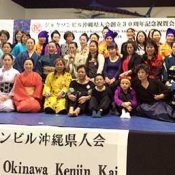
March 19, 2018 Ryukyu Shimpo
By Tamiko Suzuki
The Jacksonville Okinawa Kenjin Kai was founded in Jacksonville, North Carolina in 1988.
Camp Lejeune, the largest U.S. Marine Corps base on the East Coast, is located there as well. At first the Kenjin Kai only had 32 members, but now it has grown to incorporate 126 members.
The group plays an important role in Okinawa public relations in Jacksonville by providing public entertainment like Ryukyu dance and eisa, and introducing Okinawan culture and history through school or neighborhood events.
On March 10, the Kenjin Kai held its 30th anniversary celebration at Swansboro Rotary Civic Center.
President Toshie Cerveny of the Kenjin Kai gave a greeting at the ceremony, saying, “We have been able to reach our 30th anniversary thanks to the support of our leaders and members, who uphold our mottos of friendship, welfare, and cooperation.”
Nosho Miyagi, the leader of Miyagi Ryu Nosho Kai Dance School with nearly 50 years of experience in teaching Ryukyu song and dance, came from Los Angeles to enliven the ceremony.
Tamagusuku Ryu Keisho Kai’s Head Master Hirae Kinjo, its instructor Yoko Watanabe, and three of its pupils came all the way from Okinawa.
The Jacksonville Okinawa Kenjin Kai presented those representing Miyagi Ryu Nosho Kai and Tamagusuku Ryu Keisho Kai with letters of gratitude.
The ceremony program started off with five successive presidents of the Jacksonville Okinawa Kenjin Kai dancing Kagiyadefu Bushi.
More performances followed, including a dance called Kotobuki no Mai by students of Tamiko Uemura Ryukyu Dance School, which is the North Carolina branch of the Miyagi Ryu Nosho Kai Dance School.
In addition, Nosho Miyagi presented Michiwa Kuduchi, and Tamiko Uemura demonstrated the dance Munjuru.
More acts followed as Tamagusuku Ryu Keisho Kai members danced Hatoma Bushi and other choreography, Hirae Kinjo demonstrated Hanjo Bushi, and Yoko Watanabe and Toshie Cerveny performed Kanayo Amaka.
Young attendees gave performances including taiko drum and dance, karate demonstrations, and ballet.
Satsuki Potts of Uezu Yoshitaka School of Ryukyu Traditional Song performed Anma Katami nu Ichiban Jin.
As master of ceremonies, Taeko North engaged the audience with humor as she announced the acts.
Following the ceremony there was an afterparty where the guests socialized together, including some who came from Florida and Ohio.
The Jacksonville Okinawa Kenjin Kai was successful in celebrating its 30th anniversary.
(English translation by T&CT and Erin Jones)
Go to Japanese
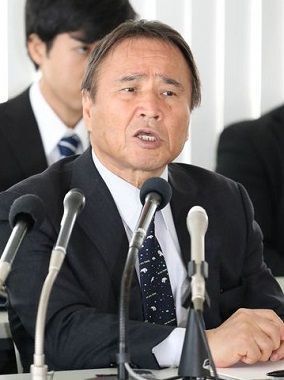
March 15, 2018 Ryukyu Shimpo
On March 14, Judge Toshihiro Shibata of Naha District Court passed down his ruling against 65-year-old Hiroji Yamashiro, the chairman of the
Okinawa Peace Movement Center, and his two co-defendants.
The defendants were charged with forcible obstruction of official business and obstruction of performance of public duty resulting in bodily injury, due to their protest activities against the construction of a new base in Henoko, Nago and of Northern Training Area (NTA) helipads in Takae, Higashi Village.
Judge Shibata said that their actions were performed as part of the U.S. base opposition movement, but that their criminal acts cannot be justified.
He sentenced Yamashiro to two years’ imprisonment, with a stay of execution of three years.
The prosecution had suggested two years and six months’ imprisonment.
Yamashiro and his co-defendants argued that the background of the protest movement was not considered, that solely their actions were focused on and discussed out-of-context.
They voiced their dissatisfaction with the ruling, criticizing that it put the precept of the law above the purpose, and is therefore unfair.
Yamashiro lodged an appeal with a higher court the same day.
Sixty-seven-year-old Hiroshi Inaba, who helped Yamashiro pile blocks in front of a gate to Camp Schwab used for hauling in construction materials, was charged with forcible obstruction of official business and sentenced to eight months’ imprisonment, with a two-year stay of execution.
The prosecution had recommended a one-year sentence for Inaba.
Forty-five-year-old Atsuhiro Soeda was indicted for his protest activities against construction of helipads in the NTA, and he was cleared on one charge.
His sentence is one year and six months’ imprisonment, with a five-year stay of execution.
The prosecution had recommended a sentence of two years for Soeda.
Inaba appealed the ruling to a higher court that day, along with Yamashiro.
Yamashiro has continued to oppose the Henoko base and related issue, and engage in protest activities.
The Japanese government sent in about 500 riot police officers, raising the intensity of protest movement.
Through this Yamashiro was arrested and detained for five months on-end.
The international community became increasingly critical of his long-term detention.
The defense claimed in court that the trial was drawing international criticism and garnering public attention.
In the reasoning for his verdict, Judge Shibata recognized the legitimacy of the block-piling act in that it was “in a sense a form of expression. However, he ruled that the activity went beyond merely the expressive aspect.
He decided that this action fell outside the scope of freedom of expression guaranteed by the Constitution.
Judge Shibata verified that the series of actions in which Yamashiro engaged, including piling blocks and standing in the way of construction vehicles, did match the crime of obstructing official business.
Furthermore, the judge criticized Yamashiro’s actions as unjustifiable, and indicated that displaying this kind of leadership in the base opposition movement had influenced other leadership figures to commit crimes and act as his accomplices.
In regard to Soeda being charged with violating the Special Criminal Law, Judge Shibata made an unprecedented ruling that trespassing is subject to punishment even if there are no signs clearly indicating that entrance is prohibited.
According to the judicial decision, in January 2016 Yamashiro piled 1486 blocks in front of a gate to Camp Schwab in Henoko being used for construction, which obstructed the hauling in of materials for construction.
(English translation by T&CT and Erin Jones)
Go to Japanese
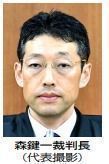
March 14, 2018 Ryukyu Shimpo
The Naha District Court handed down its ruling on March 13 in the lawsuit filed by Okinawa Prefecture against the Japanese central government demanding that the destruction of coral reef in Henoko Bay be stopped, arguing that the U.S. military did not have permission to damage the reef while constructing new facilities in Henoko as part of the relocation of MCAS Futenma.
Chief Justice Kenichi Mori dismissed the case, stating, “The prefecture’s suit is not a matter to be decided in court.”
The case was dismissed before the real arguments could be made at trial.
The request for a temporary injunction against construction until a decision had been reached was also similarly dismissed.
This defeat is the second straight loss after a suit debating the legality of revoking approval for reclamation work at Henoko was also ruled in favor of the central government.
Okinawa is planning to appeal.
Chief Justice Mori referenced a 2002 Japanese Supreme Court decision regarding a local ordinance passed in Takarazuka for Pachinko in ruling that the suit to demand the stopping of coral reef destruction was filed with the intent of protecting the common good by demanding others to fulfill their administrative duties, and a suit cannot be filed simply to force others to follow local ordinances and rules.
It is still contested whether or not this same ruling is applicable in the case where the defendant is the Japanese government, however the claim made by Okinawa regarding the problematic actions of the central government was dismissed, as “The ruling was not determining whether the defendant was a governing body or each citizen individually.”
Another suit filed to confirm a duty to acquire permits in accordance with Okinawan fishing rights rules was also struck down based on the same Supreme Court ruling.
Okinawa continues to argue that the fishing rights in the reclamation area that the Okinawa Defense Bureau (ODB) treat as having expired still exist, and that permission must be obtained from the governor before construction can commence.
However, Chief Justice Mori has called the suit illegitimate, claiming that it “does not warrant adjudication,” and would not deliberate the presence or absence of the fishing rights.
The suit was filed by Okinawa to determine whether or not the fishing rights still existed, as the ODB did not renew their permit to destroy coral where fishing rights exist when it expired in March of last year, as they considered the fishing rights in the reclamation area to have been relinquished.
Kiichiro Jahana, the governor’s chief of staff, who listened to the ruling in the courtroom, said, “It’s a shame. There was absolutely no ruling on whether or not the fishing rights exist.”
(English translation by T&CT and Sam Grieb)
Go to Japanese
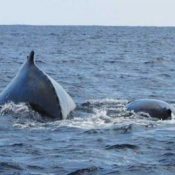
March 14, 2018 Ryukyu Shimpo
On both March 11 and 12, a parent and child humpback whales were spotted swimming in Oura Bay.
Since the pair were not spotted on March 13, it seems that they moved onto the open ocean.
The pair were seen showing their backs above water and breaching, appearing healthy.
Those who caught site of the pair were surprised by the rare siting.
One eyewitness said, “I wasn’t expecting to see whales in Oura Bay.”
Ruka Nishihara, 36, who is the captain of the glass-bottom boat in Oura Bay, spotted the pair of humpback whales swimming in the bay in the morning of March 11 about 500 meters offshore of Abu.
The pair had been breaching, or the act of pushing themselves above the surface and crashing back into the ocean causing a splash.
Nishihara said, “A part of me wanted to see the pair a little more, but I’m also happy that they were able to move on safely.”
Diving Team Snack Snufkin representative Nobu Nishihira, 60, who has been taking underwater photography in Oura Bay for many years said, “This is the first time I’ve seen whales in Oura Bay.

Mother humpback whale showing her back as she swims
I hope to see them again in the bay.”
(English translation by T&CT and Chelsea Ashimine)
Go to Japanese

March 13, 2018 Ryukyu Shimpo
By Washington Special Correspondent Yukiyo Zaha
Governor of Okinawa Takeshi Onaga arrived in San Francisco, California on March 11 (local time).
There, he had an interview with Peter Galvin and Miyoko Sakashita of the Center for Biological Diversity (CBD), which is acting as a plaintiff in the Okinawa dugong lawsuit against the Department of Defense (DoD).
The plaintiffs are calling for a halt to construction of the new base in Henoko and arguing that construction will impact the dugong that live there, which are afforded natural monument status in Japan.
In his meeting with CBD, Onaga indicated the Okinawa Prefectural Government (OPG) as a stakeholder in this lawsuit, and confirmed that the OPG will be strengthening cooperation with the plaintiffs in order to prevent construction of the Henoko base.
As the DoD returns to U.S. district court for trial, it will consult with stakeholders as set forth under the National Historic Preservation Act (NHPA).
Also, by the end of March the OPG and other stakeholders opposing the DoD will provide written statements.
After his interview with the CBD, Onaga expressed the viewpoint that the NHPA also applies to the actions of U.S. government agencies outside of the U.S., and voiced his expectation that this could be highly influential concerning the Henoko construction issue.
At the end of January, mayor of Nago City at the time Susumu Inamine stated his desire to declare Nago City’s opposition to Henoko relocation in U.S. court, since Nago City is a stakeholder in the lawsuit.
Inamine had sent a written request to the DoD and U.S. military asking for entrance into the temporarily restricted area in Henoko, which could aid him in discussions with the DoD and with impact assessments.
(English translation by T&CT and Erin Jones)
Go to Japanese

March 9, 2018 Ryukyu Shimpo
Regarding the fall of a machine part from an F-15 combat plane from the U.S. Kadena air force base, it was revealed on March 8 that it took six days for the headquarters of the 18th Air Wing to acknowledge the accident after it had occurred.
Chief of the Okinawa Defense Bureau, Koichiro Nakajima, explained after he was called to the Prefectural Government office on March 8.
The Ambassador in charge of Okinawan Affairs, Tsukasa Kawada, also attended the meeting.
Okinawa Prefecture requested the officers work with the U.S. military to suspend operation of the same combat plane until the cause of the accident is clarified.
The prefecture also requested the U.S. military’s recognition of the communication system put in place in case of emergencies, which was agreed upon in the US-Japan joint committee.
Chief Nakajima explained the reason why the Japanese and local government was not informed about the accident until later was, “The accident happened on February 27, but the 18th Air Wing only acknowledged the accident on March 5, and then contacted Japanese authorities.”
In response to a question by the vice-governor of Okinawa, Moritake Tomikawa, who asked, “Does it mean the communication was delayed between the subordinate agencies and the superior agencies within the U.S. military?”
Chief Nakajima agreed and responded, “We are currently making an inquiry to the U.S. military side to know more details.”
Vice-governor Tomikawa pointed out, “It is said that the U.S. military recognizes that they do not always report about machine parts falling if it happens over water.”
Although there was no detailed response provided by the officers, vice-governor Tomikawa stated that, “For the people of Okinawa, it doesn’t matter whether the falls happened on water or on land. Falls are falls. The probability of parts falling on a person’s head is still high” demanding the U.S. military improve their recognition.
(English translation by T&CT and Sayaka Sakuma)
Go to Japanese
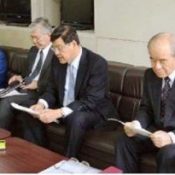
March 8, 2018 Ryukyu Shimpo
On March 7 at the Prefectural Office, the heads of nine educational institutions in Okinawa including the president of the University of the Ryukyus Hajime Oshiro held a press conference and released a joint statement requesting that Prime Minister Shinzo Abe and U.S. President Trump stop U.S. military flights over educational institutions in Okinawa.
Repeated crash landings and falling objects from military aircraft have prompted these institutions to send a joint statement to the Japanese and U.S. governments on March 2.
The statement requests that the U.S. military stop flights, review the airspace designated for training, comply with restrictions on flight speed, investigate the causes of accidents, and suggest recurrence prevention measures.
This statement mentions the incident in which a window fell from a U.S. helicopter onto the grounds of Futenma Daini Elementary School in December last year.
It says, “It was a serious accident, and the impact on educators in Okinawa was tremendous.”
As representatives of higher education institutions, these school presidents pledge in their statement to keep their voices raised against the way that unexpected situations such as successive US military aircraft accidents and troubles are overlooked.
Since 2013 the nine top higher education institutions have been requesting that flights over universities cease.
This is the sixth time.
The next most recent request was made in July, but another series of accidents has made them request again.
University of the Ryukyus President Oshiro emphasized, “Accidents are occurring one after another. It is a crisis. As an entrusted educational institution, there is an obligation to maintain the safety of the educational site.”
Faculties from other universities are also calling for flights to be suspended.
President of Okinawa Christian University and Junior College Hiroshi Tomori said, “To tolerate [the flights] would mean accepting the current situation in Okinawa. That should not be done.”
(English translation by T&CT and Megumi Chibana)
Go to Japanese
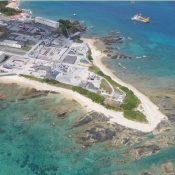
March 7, 2018 Ryukyu Shimpo
By Ikue Nakaima
A report by the Okinawa Defense Bureau (ODB) obtained March 6, detailing the results of a geological survey conducted on the undersea portion of the area designated for new base construction in Henoko, Nago, clearly indicated the possibility that the two fault lines in the undersea area to be filled, the Henoko and Sukku faults, are active.
“The analysis of the lineation suggests the faults could be active,” the report reads. The report also indicates that the seafloor near the C1 seawall, “comprises sediment that is extremely loose and soft,” and “there needs to be an investigation into its stability for construction as well as the sinking or liquefaction of the foundation.”
So far, the Japanese government has claimed that the existence of active faults, “is not confirmed,” however, a similar study conducted by the government indicated problems of active faults and foundation weakness, bringing to the forefront the safety concerns surrounding the new base construction in Henoko.
The report by the ODB was obtained by Tsuyoshi Kitaueda on March 6.
The report clearly details a deep valley-like depression in the area from the C1-C3 seawalls, “are confirmed to have an uncharacteristic geography and sedimentation that was not initially predicted.”
Furthermore, many places of the foundation were given a “zero” on the hardness scale, indicating a weak foundation. The active faults are areas where earthquakes are prone to happen.
(English translation by T&CT and Sam Grieb)
Go to Japanese

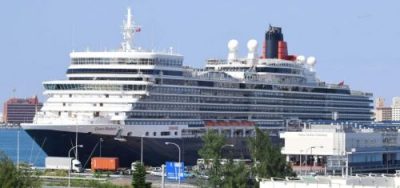
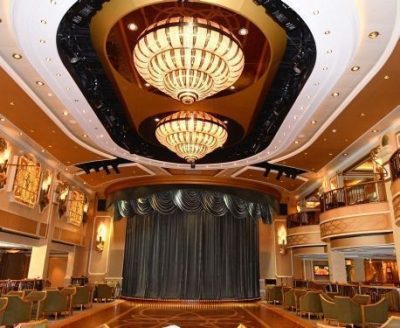









 Webcam(Kokusai Street)
Webcam(Kokusai Street)


